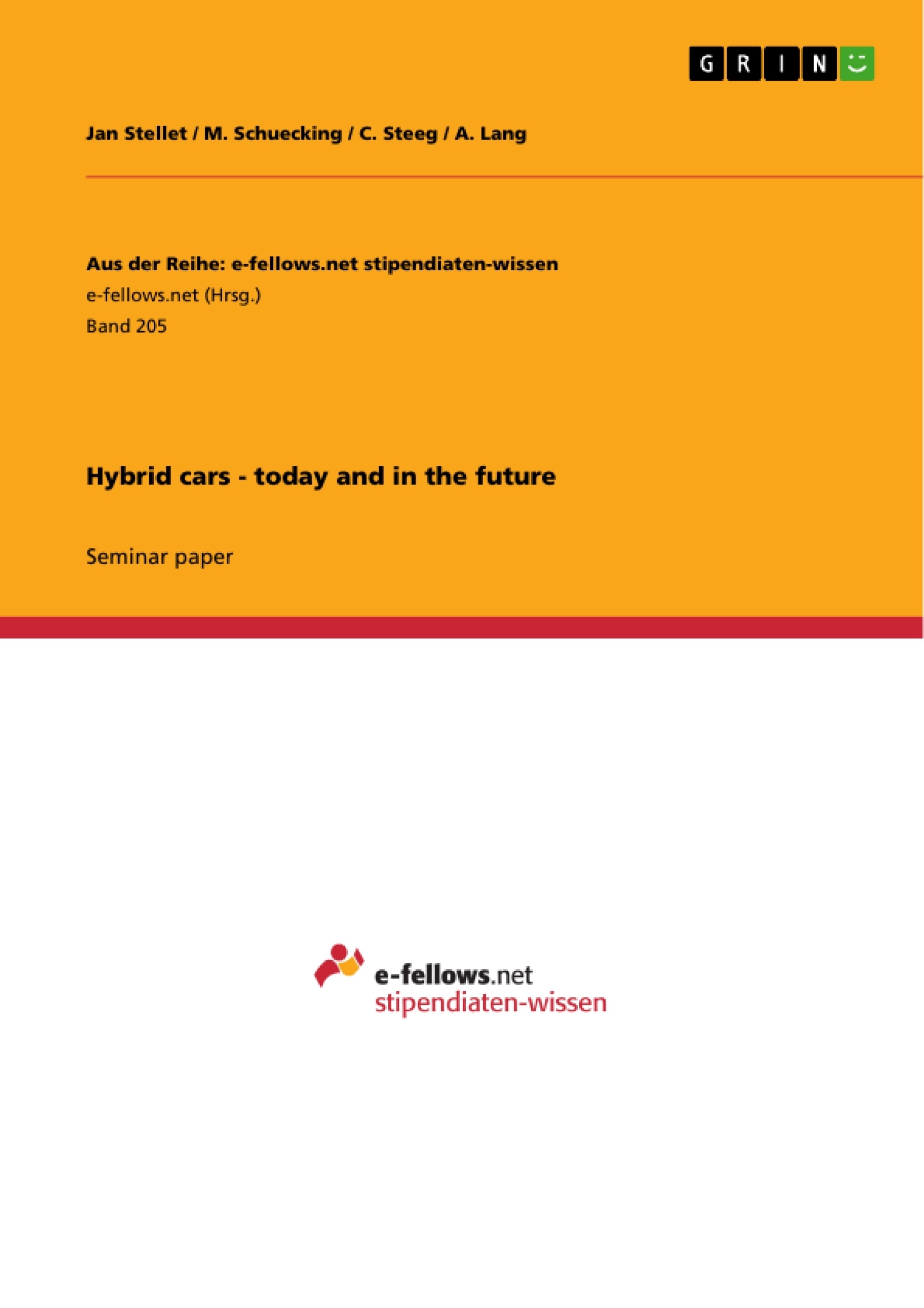It is very unusual in today’s world that an evolutionary development step turns out to be revolutionary. Some experts claim, hybrid cars can revolutionize the car industry, but will they? In order to come to an objective conclusion, the following analysis deals primarily with the technical improvements of hybrid cars and compares key aspects to conventional car design.
Structure is one of the first and most crucial decisions to be made. Evaluating different structures is thus an important aspect of an overall analysis. The relatively complex situation of having two engines combined leads to the question of optimized controlling strategies. Responsible for storing the electric energy are the rechargeable batteries. With these aspects in mind, a detailed conclusion on costs and benefits
is possible. This should allow for a differentiate view on hybrid cars.
Inhaltsverzeichnis (Table of Contents)
- Introduction
- Section - Project Statement
- Structure
- Section II - Executive Summary
Zielsetzung und Themenschwerpunkte (Objectives and Key Themes)
This analysis aims to provide an objective assessment of hybrid cars by comparing their technical improvements to conventional car design. The main focus is on efficiency and exploring the potential of hybrid cars to revolutionize the car industry.
- Technical improvements of hybrid cars compared to conventional car design.
- The potential of hybrid cars to revolutionize the car industry.
- The impact of hybrid cars on national industries and global markets.
- The role of government policy and public opinion in the development and adoption of hybrid cars.
- The challenges and opportunities associated with the development and implementation of hybrid car technology.
Zusammenfassung der Kapitel (Chapter Summaries)
- Introduction: The introduction sets the context by outlining the current state of the automotive industry, the challenges of resource depletion and environmental concerns, and the potential for hybrid cars to address these issues. It emphasizes the need for a comprehensive analysis that goes beyond simplistic answers.
- Structure: This section delves into the various types of hybrid car structures and their advantages and disadvantages. It highlights the importance of early design decisions and the impact they can have on the overall efficiency and effectiveness of the vehicle.
- Optimal Control: This section discusses the complex nature of controlling hybrid cars, considering the need to optimize the performance of two different engine systems. It explores the challenges of developing computer-controlled mechanisms that can adapt to different driving conditions for maximum efficiency.
- Electric Power System: This section focuses on the crucial role of the electrical subsystem in hybrid cars, particularly the rechargeable batteries. It examines the advantages and disadvantages of different battery technologies, including the potential and risks of lithium-ion batteries.
Schlüsselwörter (Keywords)
Key concepts include hybrid car technology, efficiency, environmental sustainability, resource depletion, battery technology, optimal control, and market impact.
- Quote paper
- Jan Stellet (Author), M. Schuecking (Author), C. Steeg (Author), A. Lang (Author), 2009, Hybrid cars - today and in the future, Munich, GRIN Verlag, https://www.grin.com/document/136041



